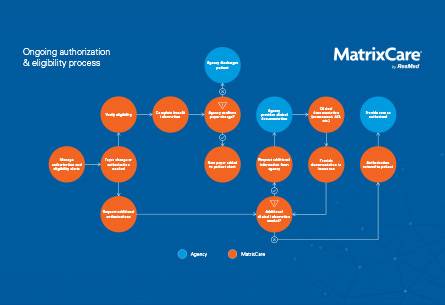In this recent episode of the Post-Acute POV podcast, our host, Nick Knowlton, VP of strategic initiatives, has a conversation with experts Deb Wesley, CEO of Addison County Home Health and Hospice, and Chris Pugliese, our director of interoperability, regarding the expanding role of interoperability in post-acute care settings. Together, they examine real-world examples of implementing electronic referrals, data exchange, medication reconciliation, and care coordination tools.
During their discussion, they explore the key benefits that interoperability offers home health and hospice organizations, highlighting how these technologies can improve outcomes, increase safety, drive efficiency, strengthen relationships with referral sources, and enhance staff satisfaction. Tune in for valuable insights into critical interoperability solutions and learn how leveraging these innovations enables agencies to provide superior patient-centered care. Make sure to tune in.
Topics discussed during today’s episode:
- [00:35 – 03:26]: Nick introduces the topic of interoperability in post-acute care and its importance for referral relationships and highlights a survey on how referral sources view interoperability with post-acute care providers.
- [03:43 – 06:49]: Nick shares the survey results that show nearly all referral sources would switch providers if they could electronically interoperate.
- [07:30 – 10:44]: Nick explains how post-acute care agencies are becoming more satisfied with their EHR vendors, but there is still room for improved interoperability and begins to outline the six steps for developing an interoperability strategy.
- [11:42 – 13:41]: Nick shares step number one, make sure that both you and the partner understand the definition of interoperability.
- [14:12 – 16:21]: Nick discusses step two, leverage your partnership with your EHR vendor.
- [17:09 – 22:58]: Nick describes the third step: evaluate the financial implications of your interoperability strategy, and expands upon the need for electronic referrals.
- [23:40 – 26:15]: Steps four and five are introduced, leverage your interoperability strategy to differentiate your organization and explore the clinical labor impact of interoperability.
- [26:50 – 29:07]: Nick talks about the sixth step, leverage your interoperability strategy to improve the quality of patient care.
- [29:48 – 32:12]: Deb Wesley and Chris Pugliese join the discussion and Deb shares some knowledge on the types of interoperability she has worked with at her organization.
- [32:44 – 35:00]: Deb explains how interoperability supports her clinical team and how it has greatly improved relationships with referral sources.
- [35:43 – 38:59]: Chris discusses how fast interoperability is gaining traction with referral sources and what he sees happening specifically between referral sources and post-acute care providers.
- [39:18 – 41:18]: Chris explains how interoperability ecosystems enable seamless app integrations.
- [41:39 – 43:22]: Deb shares how communication apps are improving real-time collaboration and Nick wraps up the conversation.
Resources
- Learn more about MatrixCare at: https://matrixcare.com/
- Learn more about Addison County Home Health & Hospice: https://www.achhh.org/
- Check out our home health solution: https://matrixcare.com/home-health-software/
- Listen to more episodes of the Post-Acute POV
Disclaimer
The content in this presentation or materials is for informational purposes only and is provided “as-is.” Information and views expressed herein, may change without notice. We encourage you to seek as appropriate, regulatory and legal advice on any of the matters covered in this presentation or materials.
©2024 by MatrixCare




